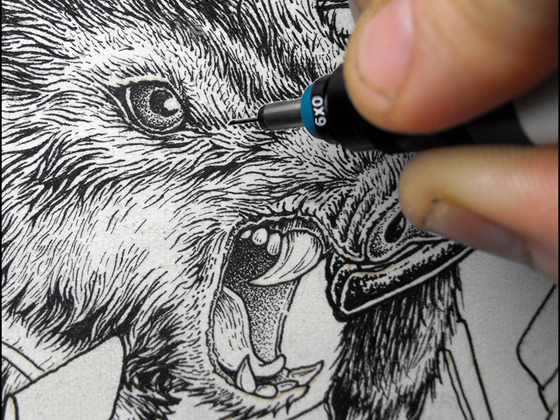http://www.northwesternartreview.org/home/2012/02/06/outsider-art-in-chicago-the-henry-darger-room/
This past weekend marked New York’s 20th Outsider Art Fair, an annual celebration of self-taught artists. While New York is sadly too far to regularly enjoy such events, Chicago has long been home to the United States’ premier nonprofit organization for outsider art. Intuit: The Center for Intuitive and Outsider Art offers a collection of over 1,000 works, as well as a study center. I’m surprised at how little I’ve heard Intuit mentioned at Northwestern [ie. never], but it is one of my favorite destinations in Chicago. Although the center offers various fascinating temporary exhibitions, it is worth a visit for the Henry Darger room alone.

Darger, who has gained notoriety as a 20th century outsider artist, is best known for his epic suite of paintings and collages, The Story of the Vivian Girls, in What Is Known as the Realms of the Unreal, of the Glandeco-Angelinnian War Storm, Caused by the Child Slave Rebellion. Through hundreds of paintings, Darger tells the intricate story of the Vivian Girls, an army of young girls rebelling against a regime of child slavery in a war-torn world.

The Henry Darger Room at Intuit was created from the contents of Darger’s own living room in Chicago, where he lived until 1973. Chock full of children’s book clippings, cracked cakes of watercolor, and religious paraphernalia, the ashen Darger room brims with the presence of the compulsive creator who once occupied the space. A brief timeline of his life is illustrated outside of the room, and various works and handwritten texts are on display. The lurid beauty of Darger’s paintings has also captivated numerous contemporary creators. References to his work are continually emerging in popular culture, from the female indie-rock trio the Vivian Girls, to the armies of female fighters in the work of contemporary artist Marcel Dzama.
Visit the Henry Darger Room yourself for a firsthand encounter with Darger’s fascinating home and studio, and a brief foray into the artist’s mind. While you’re there, don’t forget to check out the other wonderful exhibitions that Intuit offers (Heaven & Hell is on display from February 10-June 30), and pick up a copy of The Outsider magazine. An experience of Chicago’s art scene is incomplete without a stop (or many!) at this venue.








